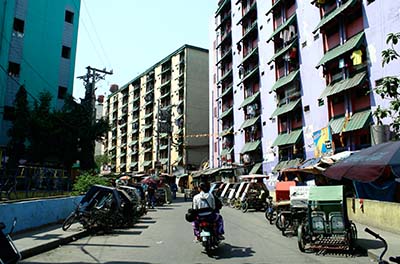Study Tours to Learn Best Practices in Migrant Reintegration

Key Contact
Soonhwa Yi
Start Date
End Date
Funding Amount
$ 35,086
Topics
Knowledge-providing Countries
Knowledge-receiving Countries
Summary
Migration carries economic and social importance in the Philippines. Migrant remittances accounted for 10 percent of the GDP in 2010, and the number of Filipinos residing overseas is estimated to be 10 percent of the population. The migration destinations are diverse, ranging from the Middle East to the Americas, as are migrant occupations: workers may be domestic helpers, nurses, construction workers, or managerial workers. This diversity may explain why the inflow of remittances in the Philippines has remained resilient amid the global financial crisis and despite the slow growth in the U.S. and the Euro zone.
In recent years, the number of returning migrants has risen, a trend that puts socio-economic pressure on society as it can be linked to high unemployment (or underemployment). Meanwhile the government lacked a comprehensive migrant reintegration framework. The government attempted to assist returning migrants through existing programs, but the resultwas not systematic. The government realized it needed to create a comprehensive migrant reintegration framework that covered the different categories of returnees – e.g., skilled, semi-skilled, or non-skilled workers; migrants who had lost their jobs abroad; or returning family members (including second generation).
In response to the government request to enhance its capacity, the South-South Facility organized a study tour for key officials and leaders working on a comprehensive migrant reintegration framework. The group traveled to Mexico to learn about its Tres por Uno program. While everyone involved in the study tour understood that the Tres por Uno was not designed for migrant reintegration, they recognized that the program was analagous to a migrant reintegration framework, and could provide important lessons, especially for drafting a co-financing mechanism.
This study tour intended to help the Government of the Philippines build its capacity to strengthen the existing migrant reintegration programs and as well as develop an overarching framework that united them all. The project achieved its primary objective of assisting the government by improving knowledge and skills in these areas. Moreover, the study tour helped strengthen consensus among the agencies that deal with migrant reintegration issues, namely the Commission on Filipinos Overseas, the Department of Social Welfare and Development, and the Department of Labor and Employment.
Beneficiaries / Participants
Migration carries economic and social importance in the Philippines. Migrant remittances accounted for 10 percent of GDP in 2010. The number of Filipinos residing overseas was estimated to be 10 percent of its population or 22 percent of its domestic labour force in 2010. The migration destinations are diverse, ranging from the Middle East to the Americas, and the occupations that migrant workers engage in vary: domestic helper, nurse, construction worker, and managerial worker, to name a few. This diversity may explain why the inflow of remittances in the Philippines has remained resilient amid the global financial crisis and despite the slow growth in the U.S. and the Euro zone.
In recent years, the number of returning migrants has risen, a trend that puts socio-economic pressure on society as it can be linked to high unemployment (or underemployment). Meanwhile the government lacked a comprehensive migrant reintegration framework. The government attempted to assist returning migrants through existing programs, but the result was not systematic. The government realized it needed to create a comprehensive migrant reintegration framework that covered the different categories of returnees – e.g., skilled, semi-skilled, or non-skilled workers; migrants who had lost their jobs abroad; or returning family members (including second generation).
Moving forward
After the study trip, the participants formed a task force to develop the framework. Upon completion, the World Bank may convene a meeting with senior officials from relevant agencies to strengthen cooperation and agree on implementing the framework. Thereafter, the Bank would assist the government to establish a pilot program on matching skills for returning migrant workers. This work might ultimately be supported by a trust fund.

 China
China Colombia
Colombia Denmark
Denmark India
India Indonesia
Indonesia Mexico
Mexico Russian Federation
Russian Federation Spain
Spain United Kingdom
United Kingdom